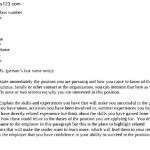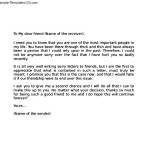Fitness Tracker Plan Template
Building a Personalized Fitness Tracker Plan Template
A fitness tracker plan template is a foundational tool for anyone seeking to improve their health and well-being. It provides structure, helps set realistic goals, and allows for consistent monitoring of progress. Creating a well-designed template allows individuals to tailor their fitness journey to their specific needs, preferences, and capabilities. This document outlines key elements of an effective fitness tracker plan template, guiding you through its design and implementation.
Key Components of a Fitness Tracker Plan Template
- Goal Setting: Define Your Objectives
- SMART Goals: Emphasize the importance of setting SMART goals (Specific, Measurable, Achievable, Relevant, Time-bound). For example, instead of “lose weight,” a SMART goal would be “lose 2 pounds per week for the next 12 weeks.”
- Goal Breakdown: Include sections for breaking down larger goals into smaller, manageable steps. This makes the overall objective less daunting and easier to track.
- Motivation & Rationale: Encourage users to note why they want to achieve these goals. Understanding the underlying motivation helps maintain commitment during challenging times.
- Activity Tracking: Monitor Your Efforts
- Activity Log: Provide columns for recording the date, type of activity (e.g., running, swimming, weightlifting, yoga), duration, intensity level (e.g., light, moderate, vigorous), and distance covered (if applicable).
- Exercise-Specific Metrics: Include sections for tracking specific metrics relevant to different activities. For example, for weightlifting, include fields for sets, reps, and weight lifted. For running, track pace and heart rate.
- Daily Step Count: Integrate a space to record daily step counts, typically measured by a pedometer or fitness tracker.
- Active Minutes: Include a section to track total active minutes per day, aligning with recommended guidelines from health organizations.
- Nutrition Tracking: Fueling Your Body
- Meal Log: Provide spaces to record each meal (breakfast, lunch, dinner, snacks) and its contents.
- Calorie Tracking: Allow users to estimate and record the total calorie intake per meal and for the entire day. Encourage the use of food tracking apps or online databases for accurate calorie estimation.
- Macronutrient Breakdown: Include sections for tracking protein, carbohydrates, and fat intake. This is particularly important for individuals with specific dietary goals, such as building muscle or managing blood sugar levels.
- Hydration Tracking: Emphasize the importance of hydration and provide space to record daily water intake.
- Sleep Tracking: Rest and Recovery
- Sleep Duration: Track the number of hours of sleep each night.
- Sleep Quality: Include a subjective rating scale (e.g., 1-5) to assess sleep quality. Users can consider factors like ease of falling asleep, number of awakenings during the night, and overall feeling of restfulness.
- Bedtime and Wake-up Time: Record bedtime and wake-up times to identify potential sleep schedule irregularities.
- Progress Monitoring: Visualizing Your Journey
- Weight Tracking: Provide a space to record weight measurements regularly (e.g., weekly or bi-weekly). Consider using a chart or graph to visualize weight changes over time.
- Body Measurements: Include sections for recording body measurements such as waist circumference, hip circumference, and arm circumference. This provides a more comprehensive picture of body composition changes than weight alone.
- Performance Metrics: Track improvements in specific performance metrics, such as the number of push-ups completed, the distance run, or the weight lifted.
- Visual Charts & Graphs: Encourage users to create charts and graphs to visualize their progress. This makes it easier to identify trends and celebrate successes.
- Reflection & Adjustment: Adapting to Change
- Weekly/Monthly Review: Schedule regular review sessions to assess progress towards goals.
- Challenges & Obstacles: Provide a space to note any challenges or obstacles encountered during the week/month.
- Adjustments to Plan: Based on the review, identify areas where the plan needs to be adjusted. This could involve modifying goals, changing exercise routines, or adjusting dietary strategies.
- Notes & Observations: Encourage users to jot down any relevant notes or observations, such as changes in energy levels, mood, or sleep quality.
The cornerstone of any successful fitness plan is clearly defined goals. The template should provide space for both short-term and long-term goals. Examples include losing a specific amount of weight, improving cardiovascular endurance, increasing muscle mass, or simply increasing daily activity levels.
This section is dedicated to logging various physical activities. It should be highly customizable to accommodate different exercise types and individual preferences.
Exercise is only one part of the equation. A healthy diet is equally crucial. The template should include a section for tracking food intake to ensure adequate nutrient consumption and calorie balance.
Adequate sleep is essential for recovery and overall well-being. The template should incorporate a section for monitoring sleep patterns.
Regularly tracking progress is vital for maintaining motivation and identifying areas for improvement. The template should include elements that facilitate visual representation of data.
Fitness plans should not be rigid. The template should include space for regular reflection and adjustment based on progress, feedback, and changing circumstances.
Template Format & Delivery
The fitness tracker plan template can be delivered in various formats to suit different preferences:
- Spreadsheet (Excel, Google Sheets): Offers flexibility and customization, allowing users to create charts and graphs easily.
- Printable PDF: Provides a tangible, portable format for those who prefer pen and paper.
- Digital App: Offers automated tracking, data visualization, and integration with other fitness devices. (This is the most advanced option and requires app development expertise.)
Tips for Effective Template Use
- Be Consistent: Regularly update the template to track progress accurately.
- Be Honest: Record data honestly, even if it’s not what you want to see. This allows for realistic assessment and adjustment.
- Be Patient: Results take time. Don’t get discouraged if you don’t see progress immediately.
- Seek Professional Advice: Consult with a healthcare professional or certified fitness trainer for personalized guidance.
By incorporating these key components and following the tips for effective use, a fitness tracker plan template can become a powerful tool for achieving health and fitness goals.
Fitness Tracker Plan Template :
Fitness Tracker Plan Template was posted in October 5, 2025 at 10:38 am. If you wanna have it as yours, please click the Pictures and you will go to click right mouse then Save Image As and Click Save and download the Fitness Tracker Plan Template Picture.. Don’t forget to share this picture with others via Facebook, Twitter, Pinterest or other social medias! we do hope you'll get inspired by SampleTemplates123... Thanks again! If you have any DMCA issues on this post, please contact us!




